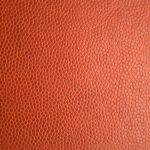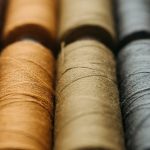You’ll find polypropylene a smart choice for your sofa thanks to its lightweight, stain-resistant, and durable nature—perfect if you want something easy to clean and maintain. It resists fading and wear, making it great for busy households with kids or pets. However, it can feel clingy due to static and isn’t as breathable as natural fabrics, which might be less comfy in hot weather. Keep going, and you’ll discover how it stacks up against other materials and how to care for it best.
Table of Contents
Key Takeaways
- Polypropylene fabric is durable, stain-resistant, and maintains vibrant colors, making it ideal for sofas in homes with kids or pets.
- It is lightweight and easy to clean, simplifying sofa maintenance and moving.
- Polypropylene resists pilling, stretching, and fading better than many natural fibers and leather.
- The fabric can attract static electricity and is less breathable, which may cause discomfort in hot weather.
- Avoid high heat exposure and use specific cleaning methods to preserve polypropylene sofa appearance and longevity.
What Is Polypropylene Fabric?
Although you mightn’t realize it, polypropylene fabric is a popular material used in many sofas today. It’s a synthetic fiber derived from a type of plastic called polypropylene, known for its lightweight and durable qualities.
When you touch it, you’ll notice it’s smooth and somewhat soft, making it comfortable for upholstery. Polypropylene is resistant to stains, moisture, and fading, which explains why manufacturers often choose it for sofas.
It also doesn’t absorb water easily, so spills tend to stay on the surface, allowing you to clean them up quickly. While it’s synthetic, polypropylene fabric is designed to mimic natural fibers, offering a practical and cost-effective option for everyday furniture without sacrificing comfort or style.
Benefits of Using Polypropylene for Sofas
When you choose a polypropylene sofa, you get a blend of durability and easy maintenance that few other fabrics can match. This synthetic fabric resists stains, making it ideal if you have kids or pets. You won’t worry about spills soaking in or leaving lasting marks.
Polypropylene is also highly resistant to fading, so your sofa will keep its vibrant color even if it sits near a sunny window. Its lightweight nature makes moving and cleaning easier for you.
Plus, this fabric resists pilling and stretching, helping your sofa maintain a polished look over time. You’ll appreciate how polypropylene combines practicality with comfort, giving you a sofa that stands up to daily use without sacrificing style or ease of care.
Common Concerns With Polypropylene Upholstery
While polypropylene offers many benefits, you might encounter some drawbacks that could affect your sofa experience.
For one, polypropylene fabric tends to attract and hold onto static electricity, which can make it clingy and uncomfortable at times. You might also notice that it isn’t as breathable as natural fibers, potentially causing discomfort during hot or humid weather.
Additionally, polypropylene can be prone to pilling over time, especially with heavy use, which may impact the sofa’s appearance.
It’s also worth noting that this fabric can be sensitive to high heat, so you should avoid placing your sofa near heat sources or using harsh cleaning methods.
Being aware of these concerns helps you maintain your sofa’s look and comfort effectively.
How Polypropylene Compares to Other Sofa Fabrics
When you compare polypropylene to other sofa fabrics, its durability and resistance to wear really stand out.
You’ll also want to evaluate how it feels and looks, since comfort and aesthetic appeal matter just as much.
Let’s take a closer look at how polypropylene measures up in these key areas.
Durability and Wear Resistance
Durability plays an essential role in choosing the right fabric for your sofa, and polypropylene stands out in this area. This synthetic fiber is highly resistant to abrasion, meaning it can handle daily wear and tear better than many natural fabrics like cotton or linen.
You’ll find polypropylene less prone to pilling and tearing, which keeps your sofa looking fresh longer. Compared to leather, it resists scratches and won’t crack over time. Its resistance to stains and fading also adds to its longevity, especially in high-traffic households.
While some fabrics may feel soft initially but degrade quickly, polypropylene maintains its integrity without sacrificing strength. So, if durability and wear resistance top your list, polypropylene is definitely worth considering for your sofa upholstery.
Comfort and Aesthetic Appeal
Polypropylene’s toughness doesn’t come at the expense of comfort or style. When you sit on a polypropylene sofa, you’ll notice it feels smooth and soft, though it might lack the plush warmth of natural fibers like cotton or wool.
Its synthetic nature means it doesn’t breathe as well, so it can feel a bit less cozy during long lounging sessions, especially in warmer climates.
Aesthetically, polypropylene offers versatility through various weaves and colors, allowing you to find a look that suits your space. Compared to leather or velvet, it’s less luxurious but more practical and easier to maintain.
Ultimately, if you want a sofa that balances durability with decent comfort and a wide range of styles, polypropylene is a smart choice to evaluate.
Maintenance Tips for Polypropylene Sofas
You’ll want to keep your polypropylene sofa looking fresh with regular cleaning and quick stain removal.
Using the right methods helps prevent damage and extends the fabric’s life.
Let’s explore some simple steps to maintain your sofa’s appearance and durability.
Regular Cleaning Methods
Several simple cleaning methods can keep your polypropylene sofa looking fresh and new.
Regularly vacuum your sofa using an upholstery attachment to remove dust, dirt, and crumbs. This prevents debris from settling deep into the fibers.
You can also lightly brush the fabric with a soft-bristle brush to maintain its texture.
For routine cleaning, wipe the surface with a damp cloth dipped in mild soapy water, then blot dry with a clean towel. Avoid soaking the fabric, as excessive moisture can cause damage.
Make sure to clean spills promptly to prevent stains from setting, but save detailed stain treatments for specialized methods.
Stain Removal Techniques
Keeping spills from setting is just the first step in maintaining your polypropylene sofa. When stains occur, act quickly by blotting the area with a clean cloth to absorb as much liquid as possible.
Avoid rubbing, as it can push the stain deeper into the fibers. For water-based stains, mix a mild detergent with warm water and gently dab the spot using a sponge or cloth.
For tougher stains like oil or grease, use a small amount of rubbing alcohol applied with a cotton ball, then blot with water to rinse. Always test cleaning solutions on an inconspicuous area first to avoid discoloration.
After cleaning, let the fabric air dry completely. Following these stain removal techniques helps keep your polypropylene sofa looking fresh and extends its lifespan.
Preventing Fabric Damage
Although polypropylene is known for its durability, taking proactive steps to prevent fabric damage will help your sofa stay in top condition longer.
Start by keeping sharp objects and pets’ claws away from the fabric to avoid tears or snags. Rotate cushions regularly to guarantee even wear and maintain the sofa’s shape.
Avoid exposing your sofa to direct sunlight for extended periods, as UV rays can cause fading. Clean spills promptly using a damp cloth to prevent stains from setting.
Use a vacuum with a soft brush attachment to remove dust and debris without damaging the fibers.
Finally, consider applying a fabric protector designed for polypropylene to add an extra layer of defense against stains and spills, extending your sofa’s lifespan.
Ideal Settings and Uses for Polypropylene Upholstery
When you choose polypropylene upholstery, you get a fabric that thrives in high-traffic areas and casual environments.
It’s perfect for family rooms, playrooms, or any space where spills and stains are common. Since polypropylene resists moisture and stains, you can confidently place it in homes with kids or pets.
Outdoor furniture or sunrooms also benefit because the fabric tolerates humidity without deteriorating quickly.
However, avoid using it in formal living rooms or spaces where you want a luxurious, soft feel, since polypropylene lacks the elegance of natural fibers.
Frequently Asked Questions
Can Polypropylene Fabric Be Recycled After Sofa Use?
You can recycle polypropylene fabric after sofa use, but it depends on local facilities. Make certain to clean the material first, then check with recycling centers to guarantee they accept polypropylene for proper processing and reuse.
Is Polypropylene Fabric Hypoallergenic for Sensitive Individuals?
Did you know 20% of people suffer from allergies? You’ll appreciate that polypropylene fabric is hypoallergenic, resisting dust mites and mold. So, if you’re sensitive, you’ll find it a smart, irritation-free choice for your home.
How Does Polypropylene Fabric Affect Indoor Air Quality?
You’ll find polypropylene fabric generally doesn’t release harmful chemicals, so it won’t worsen indoor air quality. It’s resistant to mold and mildew, helping keep your space fresher and healthier over time without causing irritation or odors.
Does Polypropylene Fabric Release Any Odors When New?
When you unpack polypropylene fabric, it’s like opening a fresh book—sometimes it releases a mild chemical odor. Don’t worry; that smell usually fades quickly as the fabric breathes and air circulates in your space.
Can Polypropylene Fabric Be Dyed or Customized Easily?
You can’t easily dye polypropylene fabric since it’s hydrophobic and resists absorbing traditional dyes. However, you can customize it using special disperse dyes or printing techniques designed for synthetic fibers to achieve vibrant colors.
- The Use of Nonwovens in Construction and Civil Engineering - July 11, 2025
- The Use of Nonwovens in Construction and Civil Engineering - July 11, 2025
- The Use of Nonwovens in Construction and Civil Engineering - July 11, 2025







